Abstract
This essay examines Robert Carlton Breer’s specific audiovisual strategies for making experimental animations. Epic theatre or Brechtian theatre stays against the popular conventions and traditions of the Dramatic theatre (Aristotelian theatre) and prevents its audiences from drowning in the performance and inactiveness by its strategies like Distancing Effect. As a result of watching identical functions between Robert Breer’s filmmaking strategies in his short experimental animations and the strategies of the Epic theatre, three questions raise in mind. Can the strategies of making a Brechtian theatre be represented in animation? Can the strategies of the Brechtian theatre be considered as equivalents for Breer’s filmmaking strategies? If it can be possible, Can the results of the Brechtian theatre – audiences’ prevention from drowning in performance and inactiveness – be formed for the audiences of Breer’s animations so that they can speculate about the issues and characters of those films functionally? To answer these questions, the method of this essay is accounted based on finding equivalents between the strategies of Epic theatre and the strategies of Breer’s filmmaking. In this way, it is indispensable to be familiar with experimental animation, Breer’s films, Epic theatre and Brecht’s performing and executive ideas. This essay analyzes and presents the mentioned issues via a library-based and comparative analytical study so that the possibility of representing the strategies of the Epic theatre in animation media and the possibility of equivalence between Brecht’s strategies in theatre and Breer’s strategies in animation can be determined.
Keywords: Experimental Animation, Robert Breer, Brecht, Distancing Effect, Theatre
Introduction
In this essay, Robert Carlton Breer’s unique cinematic strategies for making his animations are examined. It is almost safe to say that excitement is the first feeling which is created for most general audiences of the experimental artistic works. This feeling is formed for audiences as a result of confronting an artistic work that is usually non-narrative and is against commercial filmmaking principles. Breer was an American experimental filmmaker, painter, and sculptor whose experimental animations are a combination of various elements, music, familiar and unfamiliar sounds that are specially presented to audiences. But, what is the sake of this specialty? It seems as if a plausible way of responding to this question is by examining a field of art that has analogous features with Breer’s experimental animations.
Epic or non-Aristotelian theatre is a sort of performance that was coined based on specific principles against the Aristotelian Drama or mainstream theatre by the German theatre practitioner, playwright, and poet named Bertolt Brecht (1898-1956). Epic theatre was formed to invite its audiences to contemplate and distance themselves from drowning in the events of performance and inactiveness. This intention is done via the distancing effect or the alienation effect. Concerning that both the Epic theatre and experimental animation have been formed as a result of resisting mainstream and conventional principles of play and filmmaking, this question is put forward: Is it feasible to represent the audiovisual strategies of the Epic theatre in the body of animation medium? This question causes other questions to be raised in mind. Is it possible to consider Epic theatre strategies as equivalents for Breer’s experimental filmmaking strategies? In case of an affirmative response to the mentioned question, it is asked whether the results of Brecht’s principles in theatre- audiences’ prevention from drowning in performance and inactiveness- are created for the audience of Breer’s experimental animations or not? In other words, does experimental animation try to form a distancing effect as well as the Epic theatre? Answering these questions can identify the artistic credit and the aesthetic value of Breer’s films, too.
In the way of answering the over-mentioned questions, to be familiar with experimental animation, some clarifications are presented in “Experimental Animation from Analogue to Digital” (2019) written by Miriam Harris, Lilly Husbands, and Paul Taberham alongside some definitions from “Understanding Animation” (1998) written by Paul Wells. Afterward, to be acquainted with the Epic theatre briefly, some points are mentioned in Farzad Moafi Ghafari’s article “A Review about Macro Theories of Drama (Aristotle & Brecht)” (2007). Furthermore, presenting some findings from Sonia Bridge in her Ph.D. fine arts philosophy dissertation “Robert Breer: single-frame Aesthetic and inherited modernisms in Relation to Neo-avant-garde and Debates on Film Animation” (2016) triggers a better understanding of Breer’s art to be formed and this proves the importance of examining his artistic works more sensibly. In this essay, for creating the possibility of examining and assimilating Breer’s experimental filmmaking strategies and Brecht’s Epic theatre techniques, at first, some terms and conditions about experimental animation are expressed by Paul Wells. Following each one of them, a strategy for making the Epic theatre from Brecht’s point of view in his book “Brecht on Theatre” (2020) is presented so that vital infrastructures for comparing them with Breer’s filmmaking techniques can be set up. Eventually, by analyzing the mentioned strategies, it becomes clear which one of the Epic theatre strategies can be equivalent to one of Breer’s filmmaking strategies. In this way, the possibilities of representing Brecht’s theoretical strategies in the body of animation and also the feasibility of making these strategies equivalents for Breer’s filmmaking strategies are determined and confirmed as well.
Literature Review
In the field of experimental animation, two comprehensive books examine these sorts of films; “Experimental Animation: An Illustrated Anthology” (1976) written by Robert Russett and Cecile Starr and as mentioned before, “Experimental Animation from Analogue to Digital”. In this research, the information of the “Experimental Animation from Analogue to Digital” is used as it is a newer and more updated reference. In Iran, some research on the ground of experimental animation was done such as Fatemeh Jafari’s master dissertation at Tarbiat Modares University titled “Dimensions of Experiment in Animation” (2006) and Pegah Izadian’s master dissertation at the University of Art titled “The New Expressive Ways of Experimental animation” (2012). Of course, in this research, the information of Sonia Bridge’s mentioned Ph.D. thesis at the University College London is used. The reason for using Bridge’s thesis is that the focus of this research is on Breer’s experimental films and from this viewpoint her thesis is considered a beneficial reference.
Even though some books and researches about experimental animation are accessible but anyone of them does not connect experimental animation to very various realms of art such as the Epic theatre. Therefore, this essay can be accounted as a novel and unique research since the characteristics of the experimental animation and the Epic theatre are examined based on some equivalents in their elements and structures.
Experimental Animation
Harris, Husbands, and Taberham in the introduction part of their book “Experimental Animation from Analogue to Digital” indicate the predominant alignment of experimental animation with a non-industrial production context in which the role of the individual artist is very prominent. They consider “non-objective”, “non-linear”, “non-normative” and “unconventional” as the central words which describe this multifarious art form (Harris, Husbands and Taberham 2019, 1). They accredit experimental animation in association with an extensive range of innovative forms and techniques such as painting or scratching onto celluloid, collage, stop-motion, hand drawing, analogue computer graphics, and others (Ibid). Besides, they point to the recent experimental artworks which disturb traditions and extend the potentialities of moving image art by utilizing 2D and 3D computer animation, spatial projection, and interactive installation (Ibid). It is easy to understand the high value of experimental animation by noticing Paul Wells’s remembrance of a film historian’s statement. Wells indicates the true animation from the viewpoint of William Moritz as he mentions:
No animation film that is not non-objective and/or non-linear can really qualify as true animation, since the conventional linear representational story film has long since been far better done in live-action (Wells 1998, 28).
According to Moritz saying it is obvious that he considers animation the most suitable medium for making experimental films. Hence, in this research experimental animation is investigated as the purest form of experimental film.
Taberham, in his article “IT IS ALIVE IF YOU ARE, Defining Experimental Animation” Points to experimental animation as a film that might defy straightforward description and not essentially feature an overt take-away moral or message (Taberham 2019, 25). He names these films as provokers rather than tellers and adds that spectators are free to translate these films as they will (Ibid). About the resistance of the experimental animation against straightforward interpretation, Taberham hints at Lilly Husbands’s statement which illustrates indeterminacy as one of the most motivating and productive aspects of these animations because they invite their viewers to be active and attend to their comprehension of these films (Ibid). Husbands’s hint of inviting audiences actively to fathom experimental animations reminds us of Bertolt Brecht’s emphasis on activating the audiences via theatre and inviting them to contemplate as well. Therefore, scrutinizing experimental animation in conformity with the Epic theatre is noticeable.
Brecht’s Epic Theatre and Breer’s experimental animation
Moafi Ghafari, in his article “A Review about Macro Theories of Drama (Aristotle & Brecht)”, puts forward after Aristotle and throughout the theatre history, Brecht was the first person who had various and revolutionary opinions associated with the impact of drama on audiences (Moafi Ghafari 2007, 34). He refers to instruction as the function of theatre from Brecht’s viewpoint which was very worthwhile due to his glorious and vast activities as a theatre director, playwright, and theorist (Ibid, 37). Ghafari also indicates some other names rather than Epic that Brecht used to describe his established theatre such as “non-Aristotelian drama”, “dialectical theatre”, and “training and experimental theatre” (Ibid).
Ghafari emphasizes “Distancing Effect or Alienation Effect” as one of the structural ideas of Brecht’s which stands against audiences’ immersion in Aristotelian theatre. To define the meaning of this expression, he points to Brecht’s specific theatrical strategies to abstain audiences from being immersed in the events of the play emotionally so that they can have possibilities to cogitate on the play and its related issues actively (Ibid, 38). Ghafari’s clarifications about Brecht as the first person whose ideas contradict Aristotle and his theatrical highlighted technique- immersion- can confirm Brecht’s disagreement with the mainstream or dominant form of theatre.
Sonia Bridge hints at Breer’s experimental films beyond traditional mediums and considers a wide-ranging transformation of art for his work (Bridge 2016, Abstract). She underscores Breer’s animations as the refuser of the principles of conventional cinema and commercial studio animation by the recourse in his work to the “Low Arts” of early prevalent animation and pre-cinematic tools which lay bare the overriding film mechanics in a manner that nonetheless celebrates the fascination of its delights (Ibid). Moreover, Bridge implies Breer’s quote about his eagerness for potentially activating every square inch of the screen of his films and infers that his cinematic world has critical processes that grasping needs playing within a space in which representation becomes unstable, reinvented, and generative of efficient difference made accessible by his exploration of the single-frame aesthetic (Ibid, 68). Bridge’s explanations affirm that comprehending Breer’s films is in demand of vanishing spectators’ familiarity with popular cinematic conventions and setting up a world with novel implications. Her remarks also about Breer’s attempts for staying away from the principles of the mainstream or commercial animation, recall Brecht’s artistic activities for making his idealized theatre by abdicating the principles of mainstream theatre. In addition, her hint at Brecht’s emphasis on forming potentially activated screens and abolishing audiences’ acquaintance with customary cinematic traditions proves that these films need active audiences who should be thinking like the spectators of Brechtian theatre. Because of these mentioned similarities, in this research, the principles of Breer’s films are compared with the principles of Brecht’s Epic Theatre.
In the Following, Paul Wells’s clarifications about the terms and conditions of the experimental animation are presented. Then, by leaning against Brecht’s idea as basic principles for making the Epic theatre, distancing effect, and its essentialness, Breer’s audiovisual strategies in his animations are explored.
“Abstraction” in experimental animation and the Epic theatre
Paul Wells introduced “Abstraction” as the first feature of the experimental animation (Wells 1998, 36). To define this term in experimental animation, he points to different shapes and forms which are often used rather than figures (Ibid, 43). Besides, these shapes and forms are more related to rhythm and movement in their own right in contrast to the rhythm and movement of a specific character (Ibid). To complement his explanation, Wells indicates Moritz’s saying about non-objective animation as the purest and most challenging form of animation that its true creation requires the highest mental and spiritual talent in the way of using alluring shapes, forms, and colors, imaginative and expressive motions (Ibid). According to the mentioned issues, one of the rudimentary differences between experimental and commercial animation is the visual elements used in both. Mainstream or commercial animations usually feature specific characters besides comprehensible figures; however, experimental animations feature abstract and incomprehensible forms, shapes, and figures.
Brecht believes the necessity of realization in theatre emanates from alienating characters and events of the play. He accounts the act of alienating an event or character means vanishing the obvious and familiar aspect of them and making curiosity and excitement about them for audiences (Brecht 2020, 133–163).
About one of Breer’s experimental films named “BANG” (1986); Taberham hints that it pertains to his autobiography which deals with Breer’s childhood and adolescence (Taberham 2019, 26). In this animation, diverse images are combined with a high film editing pace successively. These images consist of paintings, varied photographs, and live actions which are revealed alongside forms, colors, shapes, words, and sentences. By watching the repetitive footage of a boy who is paddling and also images of Breer himself beside diverse footage of events which can be experienced by everyone in their lives, it is fathomed that he tends to show a human on the way of growth or his autobiography. In this experimental work there are some noticeable plans that get our attention where the rotoscoped and realistic image of a baseball player, who is running, is turned into a figure, form, and finally simple and abstract shapes as time passes in an animation-like way (Frames 1) 1. It seems as if the movement from the existing realism of this plan to the primary forms, shapes, and lines of the whole image is a reminder of Brecht’s statement about alienation visually. The reason is that by showing rotoscoped pictures of a baseball player realistically, something familiar is remembered by audiences and in the course of the time it is converted into shapes, lines, and the primitive visual elements or abstraction. Hence, something familiar is turned into something unfamiliar as Brecht himself mentioned and this causes curiosity and excitement to be formed in audiences.

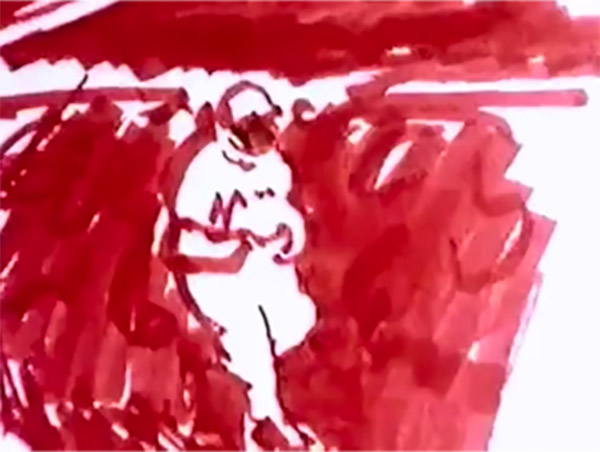
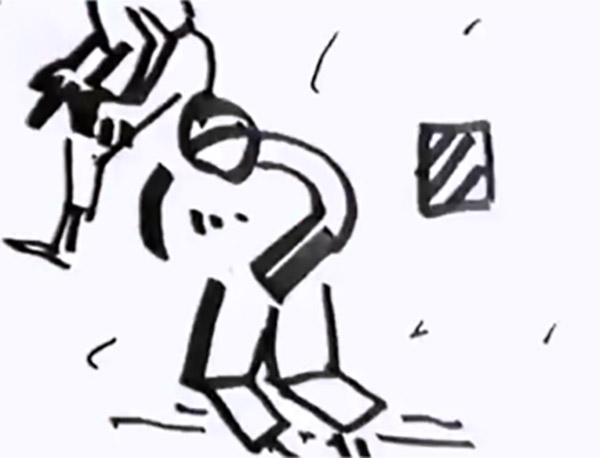
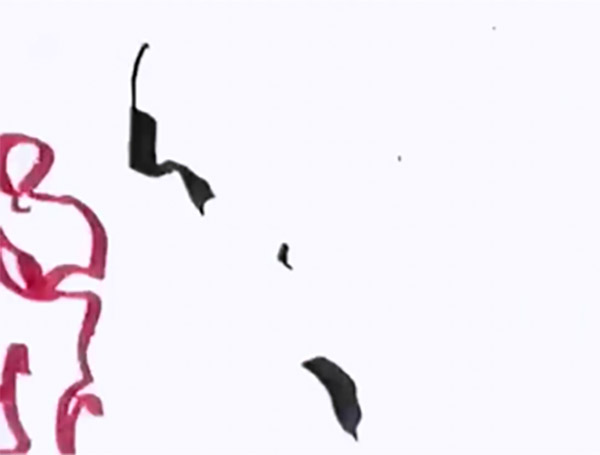
Frames 1 – From up to down: turning the realistic figure of the baseball player to simple and abstract shapes in “BANG”
In addition, another analogous sample of the over-mentioned artistic strategy can be seen in “FUJI” (1974). In this animation, the speedy film editing merges different images such as live-action, figures, forms, colors, and lines. But, concerning repetitive images which portray a passenger’s lookout from inside and behind the window of the train, it is viable to discover the travel as the theme of this film. In a short-time plan of it, a man is shown while running. But, as he runs, the form of his body decreases from the realistic and is turned into a rotoscoped, shape-like, and linear form (Frames 2). This means exactly a visual similarity for moving from familiarity to unfamiliarity, abstraction, and alienation. Thus, about the presented examples and samples, it is feasible to suppose that the existing abstraction of the experimental animation is equivalent to alienation in the Epic Theatre.
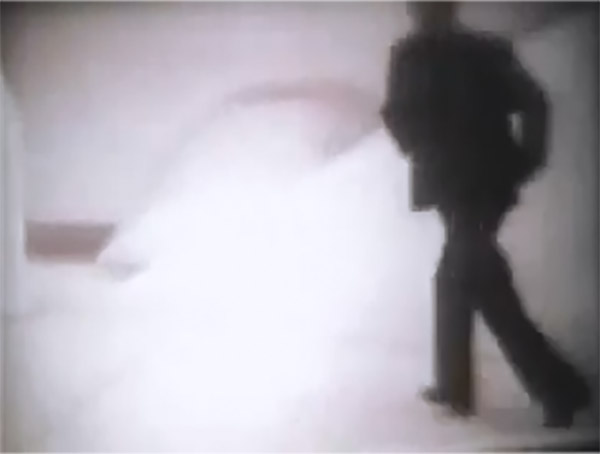
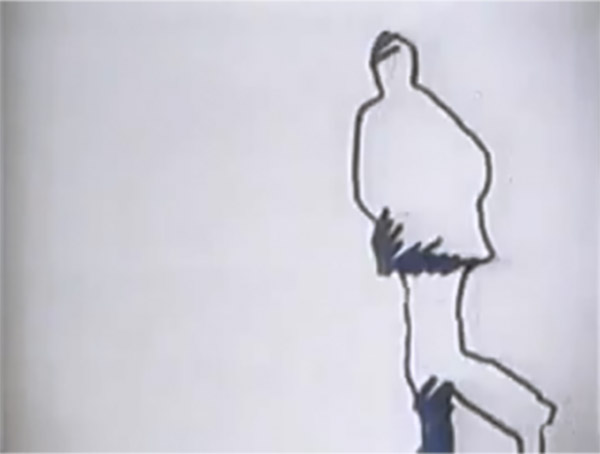
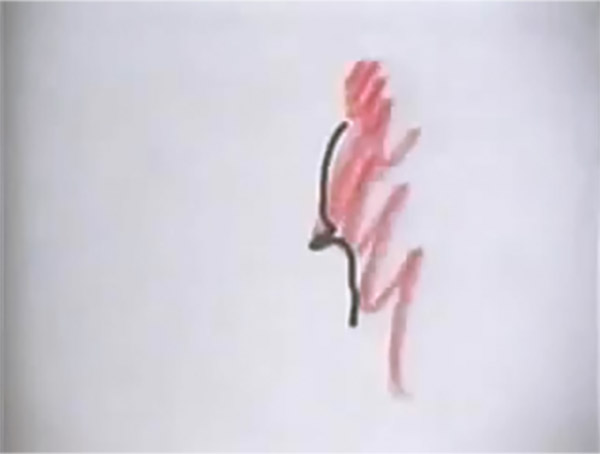
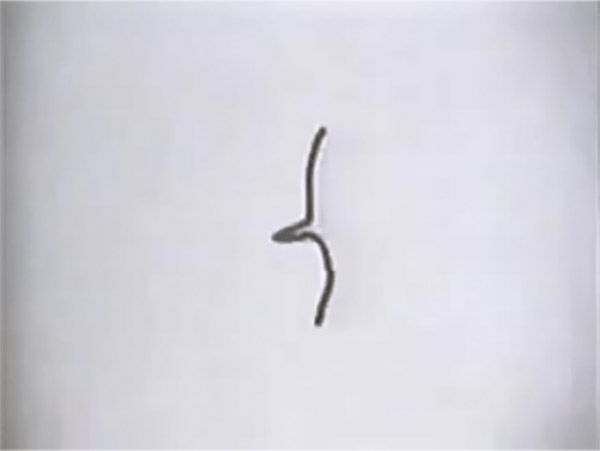
Frames 2 – From up to down: turning the realistic figure of a running man to the linear and abstract form in “FUJI”
“Specific Non-continuity” in experimental animation and the Epic theatre
“Specific Non-continuity” is introduced by wells as the second trait of experimental animation which means refuting sensible and linear continuity and giving privilege to illegal, irrational, and sometimes multiple continuities (Wells 1998, 43). He refers to experimental animation as a medium that describes its own form and conditions and utilizes these as its distinctive language (Ibid). Based on the presented issues, it is comprehensible that Wells’s purpose for clarifying specific non-continuity is emphasizing the lack of narrative and visual continuity in experimental animations.
Brecht believes the actors or actresses, who use the alienation effect, are in charge of vanishing audiences’ emotional submergence in the play (Brecht 2020, 172). He found that one of the requirements of the alienation effect, which activates theatre audiences, is when players try to make apparent practical facets for shown events on the stage (Ibid). To illustrate this issue better, Brecht points to breaking the “Fourth Wall” 2 and highlights the audiences’ presence in the play so that the players can talk to their spectators as often as they want (Ibid).
From the beginning of “BANG”, it is almost understandable that Breer is trying to talk to his audience as well as the players of the Epic theatre. The reason for this concept is that at the beginning of the animation a question is displayed on the screen: “Are you deft?” (Frames 3). Other words and questions are shown on the screen during this animation, too. A cinematic strategy like this on behalf of Breer seems to be equivalent to the Epic theatre players’ strategy for calling spectators and talking to them. Moreover, in another plan of this animation, the sound is interrupted abruptly for a short period when a human’s voice is heard while asking: “Hey, how come I’m not hearing this?!” This strategy can be considered again as an equivalent to the Epic theatre player’s actions for speaking with audiences and asking for their ideas. But, in a very short plan of this animation a close shot of a man’s lower half of face while speaking to the audience is shown and for a short moment, a human’s voice is heard (Frame 4). It is viable to presume that this plan is completely a visual equivalent to the theatrical action of the Epic player who commences talking to audiences for keeping them active throughout the play. It is explicit that when a theatre player speaks to audiences, the continuity of his or her role is crumbled for audiences visually and narratively. Because those audiences, who have gotten used to specific continuity and submergence of the Aristotelian or mainstream theatre, become active via this awakening and alienating action. Therefore, it is possible to assume the Epic theatre player’s talking action is equivalent to the over-mentioned existing non-continuity in Breer’s experimental animation.

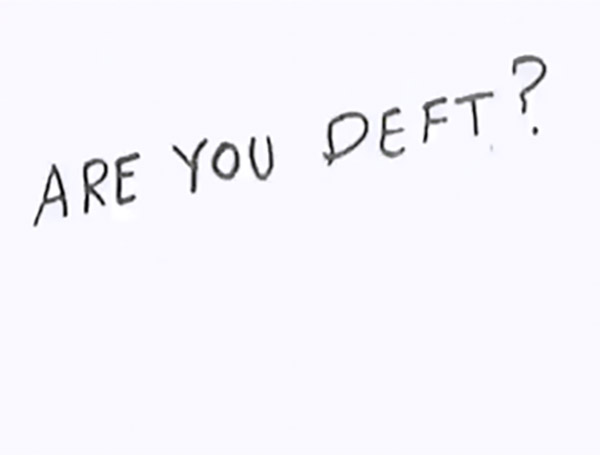
Frames 3 – Showing written questions on the screen in “BANG”
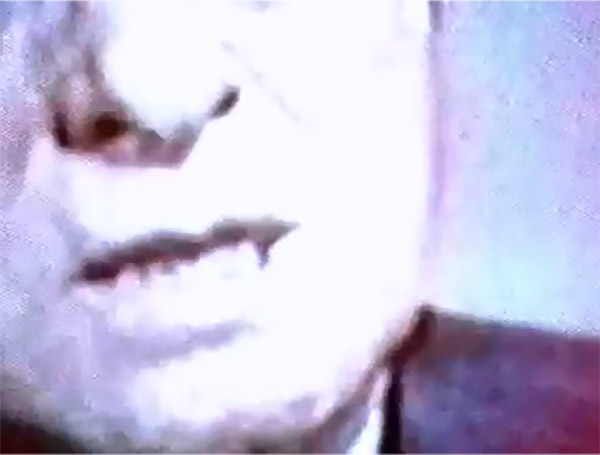
Frame 4 – A close shot of a man’s lower half of face talking toward audiences in “BANG”
“Interpretive Form” in experimental animation and the Epic theatre
Wells indicates “Interpretive Form” as another attribute of experimental animation that the bias of that is aesthetic and non-narrative; however, sometimes aesthetic traditions are extended to rebuild a diverse narrative conception (Wells 1998, 43). He says:
Experimental animation prioritises abstract forms in motion, liberating the artist to concentrate on the vocabulary he/she is using in itself without the imperative of giving it a specific function or meaning (Ibid, 44).
Wells discusses the necessity of different audiences’ responses to experimental films and instead of supposing a location where audiences have familiarity with formal narrative strategies, invites them to interpret the work on their own terms or terms predestined by the artists (Ibid). Based on Wells’s statements, the essentialness of audiences’ various responses to experimental films is emphasized and the high importance of speculating about the film for interpreting that is put forward notably. In other words, the existing interpretive form in experimental work seeks audiences’ mental activities for realizing the meanings of the film and this stays them away from submergence into the play as a factor that they usually encounter while watching mainstream or commercial works.
One of the presented orders from Brecht for Epic actors/actresses is learning how to write (Brecht 2020, 235). The reason Brecht highlights writing is that it generates another capability for players; improvisation. He calls improvisation a vital item that prompts players to be proficient at each style of performing (Ibid). Brecht’s focus on improvisation means giving authority to actors/actresses to use their words and sentences but in the way of transferring the considered message to audiences. Hence, it is possible to assume players’ liberty at consuming their self-made words as equivalent to experimental artists’ mandate for using their cinematic items in their favorite ways outside of the area of mainstream filmmaking. As a result, in this way, the experimental artists also transfer their intended message to audiences in their beloved personal ways similar to the Epic theatre players.
By watching Breer’s films, their fast film editing pace for juxtaposing images and elements is perceived clearly. These juxtaposed images include a high range of visual items from meaningless and unrealistic raw lines and shapes to specific objects, things, and even realistic images of humans that seems to be irrelevant to each other at the first look. A visual convention like this can be found in Breer’s “Eyewash” (1959). In this animation, audiences watch diverse images which are juxtaposed with a high editing pace; images are made up of forms, colors, textures, live-action, and things with varied compositions (Frames 5). By noticing the method of presenting images alongside the repetitive images of gloves and some shapes corresponding to human fingers, it is recognizable that this experimental animation is an indication of human engagement with manipulating the elements and phenomena of the world and altering them in their satisfying and selfish ways.
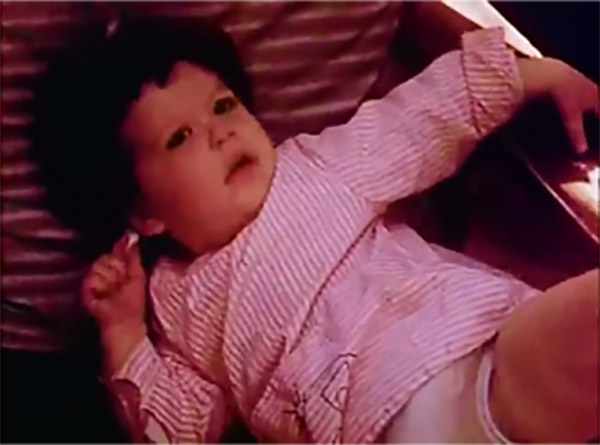
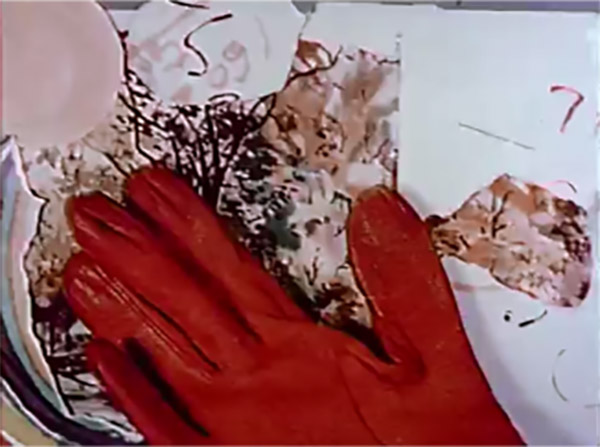
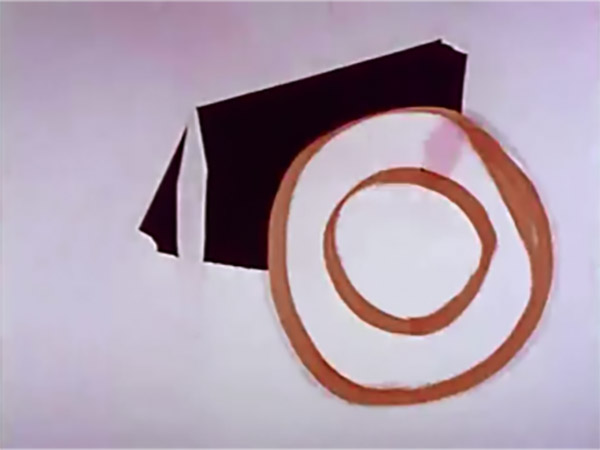
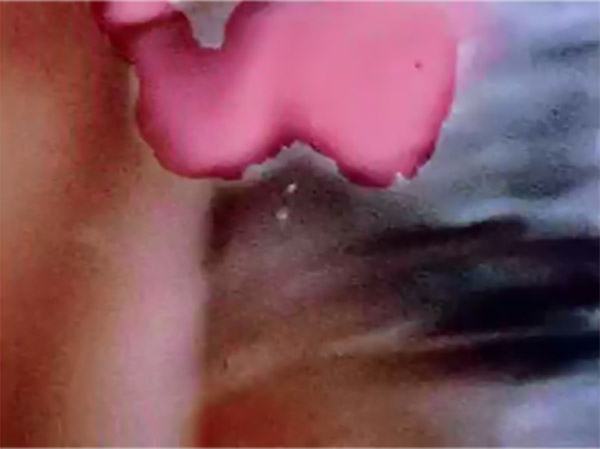
Frames 5 – Juxtaposing different images in “Eyewash”
It seems the varied numbers of images that are presented in “Eyewash” can be equivalent to verbal improvisation in Epic theatre. As in experimental animation, audiences are provoked to interpret and use their conclusions due to watching the progression of visual and personal cinematic elements; it is apprehensible that in the Epic theatre, audiences are also motivated to use their concepts and conclusions to form a correct understanding out of players’ improvised words to get their meaning or purpose. Therefore, as the existence of personal visual items in experimental animations creates an interpretive form for its audiences, the existence of players’ personal and improvised elements alongside audiences’ mental reactions creates an interactive form, too.
“Evolution of Materiality” in experimental animation and the Epic theatre
Wells talks about “Evolution of Materiality” as another important term in experimental animation (Wells 1998, 36). He considers the main concentration of experimental work on its very materiality such as colors, shapes, and textures which invent the experimental piece (Ibid, 45). Wells speculates about the used materials in experimental work as items that evoke special moods and ideas that cause directors’ work to give pleasure in their own right without having to be combined with a particular framework or meaning (Ibid). For example, he points to a hand-painted dot that evolves into a group of circles where the audience realizes the physical nature of the paint itself, its color, background, and shapes that appeared out of the primary design (Ibid).
Brecht believes that the suitable scenery of the theatre stage should be made in a way that spectators conceive they are in the theatre hall not somewhere else (Brecht 2020, 29). Hence, in contrast to concealing the technical tools of the stage in the Aristotelian theatre, He suggests displaying them to audiences deliberately (Ibid, 29–30). Brecht even tends to see the space of the theatre itself becomes alienated for audiences. So, to achieve this goal he advises not to hide the source of lighting on the stage, and on the contrary, he recommends showing them to spectators and making the stage entirely bright (Ibid, 179). From Brecht’s point of view, showing lighting tools is significant due to making alienation a criterion that prevents audiences from submergence and illusion (Ibid). That’s why, it is plausible to remark that baring the basic tools of the theatre stage for audiences, in addition to their preliminary function such as lighting, adds a novel functionality to the play as an awakening aspect so that they comprehend they are watching an artificial work, not a realistic one. It is reasonable to account for the new function of the Brechtian stage materials as their evolution; in other words, an operation beyond just lighting and brightening the stage in this case. Thus, as in experimental animation, the materials evolve, in the Epic theatre the tools and materials of the play evolve, too, and achieve functionality more than their introductory usage. The mentioned evolution in both of these mediums is a fundamental factor for activating audiences and staying them away from emotional submergence. Accordingly, this means exactly alienation effect.
In “BANG”, having shown different images which were mentioned before, at the end of the film a Thaumatrope as one of the primitive tools for making animation is displayed (Frames 6). It seems as if the reason for featuring this primary moving picture tool is to put forward to audiences that everything you watched is nothing except an illusion that is created via animating tools. Therefore, the artificial essence of the film is emphasized to audiences in this way. It is sensible to consider this visual action as an equivalent to showing the basic tools and equipment which form the entire stage of the Epic theatre such as lighting tools. Both of these actions in these two mediums trigger audiences to become conscious of the artificial form of the play so that by pretending a distance between themselves and the show they can get an active role in mulling over the displayed theatrical events functionally.
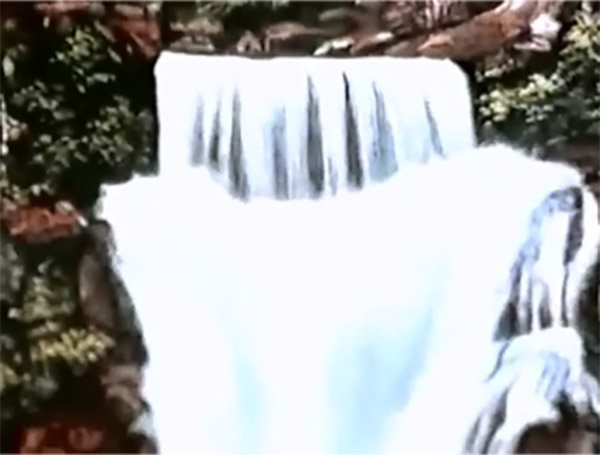

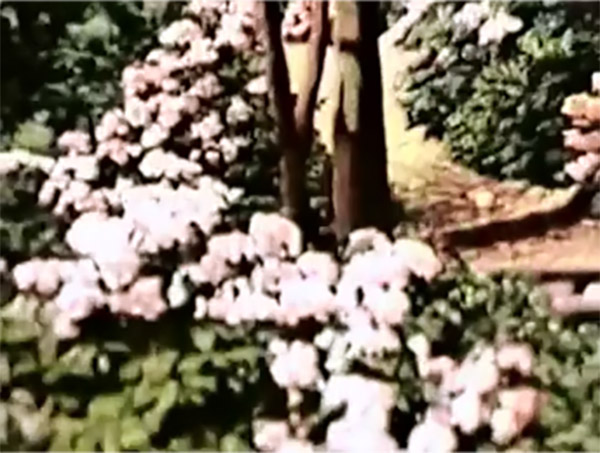
Frames 6 – Featuring a Thaumatrope with images of flowers and waterfall on its two sides in “BANG”
“Multiple Styles” in experimental animation and the Epic theatre
Based on Wells’s indication, the presence of “Multiple Styles”, which means a mixture of various modes of animation, is found in experimental animation (Wells 1998, 45). He states:
This operates in two specific ways – first, to facilitate the multiplicity of personal visions and artist may wish to incorporate in a film, and second, to challenges and re-work orthodox — mainstream — codes, and conventions and create new effects (Ibid).
To define the vital pillars of the Epic Theatre, Brecht points to techniques and principles which affirm this type of play has multiple styles in its structure. For instance, it is a good idea to remember his confirmation for embedding documentaries in theatre and projecting them on screens on the stage as factors for creating alienation effect (Brecht 2020, 199). He thinks the events of the play are alienated as a result of showing more complete events simultaneously (Ibid). As was mentioned before, Brecht approves of actors’/actresses’ improvisation as a valid action on the stage and recognizes it as an item that increases their domination over every style of the play (Ibid, 235). He also hints at one of his prosperous plays which the most striking innovation of that was splitting the music from other events and elements of the play where a small orchestra played their music on the stage beside the events of the play while they were highlighted by a projecting spotlight (Ibid, 263). Brecht also advises players to sing songs solo, twosome, threesome, and as a chorus (Ibid, 264). In Brecht’s plays, using placards between presented events was thoroughly allowed. He believed using placards makes distancing effect which gave enough time to spectators to elaborate on those events which were displayed for them as well (Ibid, 362). Brecht also refers to pantomime as another efficient method for players since it forms alienation effect and helps the intended message or meaning to be apprehended by audiences more favorably (Ibid, 367).
According to the over-mentioned principles and styles used in the Epic theatre such as using documentaries, live music, various forms of singing, pantomime, placards that remind intertitle of old and silent films, it is commonsense to consider “Multiple Styles” as a feature in this medium as well as experimental animation.
Sonia Bridge examined some of Breer’s films related to the usage of diverse styles in his films such as “Recreation” (1956) which provokes the sense of immediacy by its form that staged between non-narrative, variant cumulative rapidity of the single-frame imagery and the competitive speed of the audio-tracks monotone French commentary, written and narrated by the American theorist, Noël Burch (Bridge 2016, 136). She describes Burch’s narration as a disjunctive and collaged verse that is presented loosely in the way of a Dada-like sound poem (Ibid). Bridge indicates Burch’s method for using nonsense poetry and puns as a correspondence with the imagery (Ibid). By noticing Bridge’s hint of Burch’s Dada-like sound and nonsense poetical items against the sound-track of this animation, it is acceptable to suppose that there is improvisation in this film as well as the Epic theatre. That’s why improvisation is heard in Breer’s animation as a unique style. But, multiple styles are seen in “BANG” more than in other Breer’s films in which some words and sentences are displayed on the screen remind the function of placards in Epic theatre for us (Frames 7). Regardless of this, the present documentaries and live-action beside paintings, forms, and abstract shapes are seen visibly (Frames 8). In addition, varied and nonsense music, sound effects, a man and woman’s voice, the sound of bystanders and chorus, rotoscoping as an animation technique, 2D animation, photographs, and so on are presented for audiences integrated. Hence, it is rational to account for multiple styles as a common trait between Epic theatre and experimental animation.
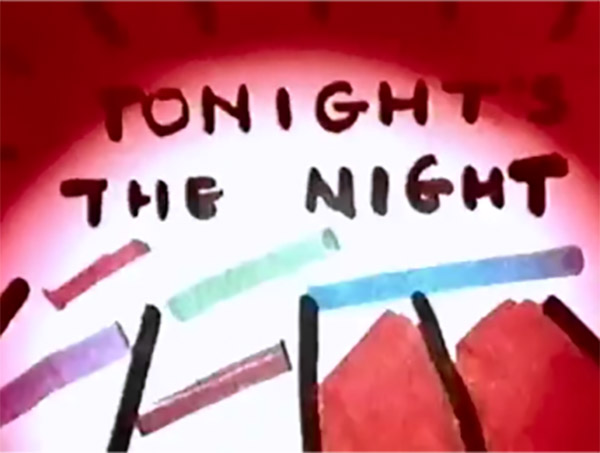
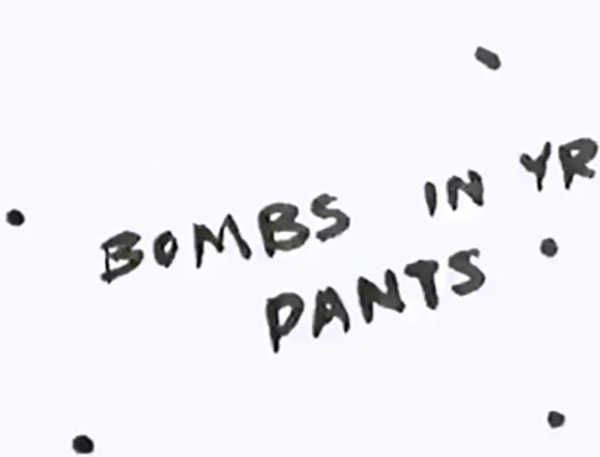
Frames 7 – Showing sentences on screen in “BANG” is similar to showing placards before kicking each part off in Epic theatre
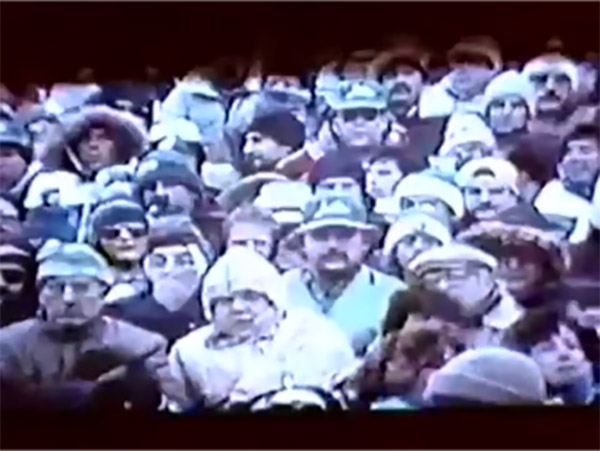

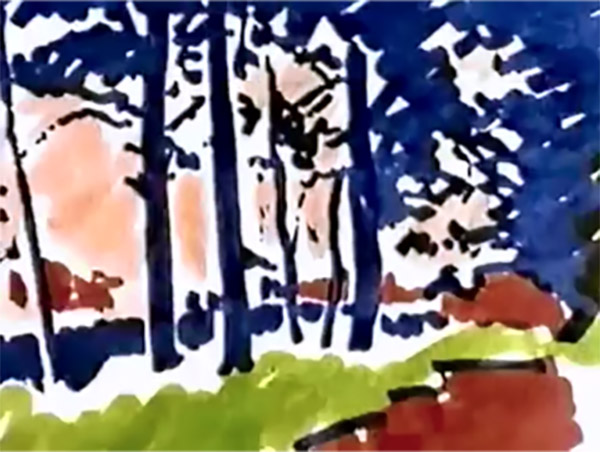
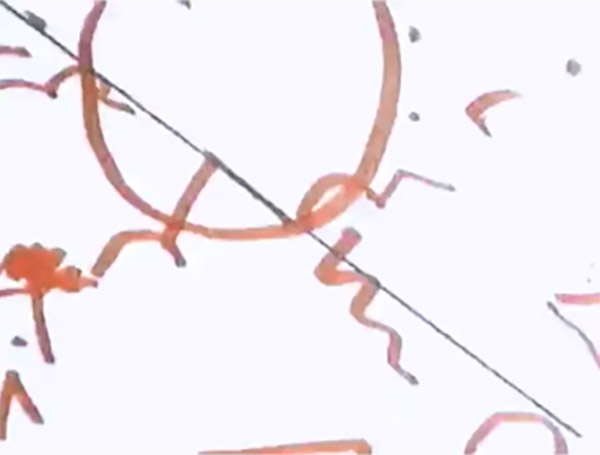
Frames 8 – Presence of documentary and live-action beside paintings, forms, and abstract shapes in “BANG”
“Dynamics of Musicality” in experimental animation and the Epic theatre
Wells indicates a strong relationship between experimental animation and music which forms “Dynamics of Musicality” (Wells 1998, 46). He supposes moving colors and shapes within time with variant rhythms, movements, and speeds if music could be visualized and cites:
Sound is important in any animated film, but has particular resonance in the experimental film, as it is often resisting dialogue, the clichéd sound effects of the cartoon, or the easy emotiveness of certain kinds of music (Ibid).
Saying about the resistance of experimental animation against dialogue, sound effects, and the simple emotive music can be a reminder of the distinction between the sound-track of experimental animations and the sound-track of mainstream or commercial animations which usually back up characters, their modes, and events of the film harmoniously. As a result, it is affirmable to assert that in experimental film because of the lack of identified characters and specific narratives, music has an influential role to boost the visual effect of the film.
To describe the details of appropriate music for theatre, Brecht points to alienated music against actors’/actresses’ performances and in other words, music that does not accompany the play at all except for interpretation (Brecht 2020, 365). Music should not merely reflect the emotional and empathetic modes of the events on the stage according to Brecht’s idea and should not just highlight feelings (Ibid). Brecht for an instance talks about one of his plays named “The Caucasian Chalk Circle” (1948) in which the passive and unemotional music and song do not accompany the showing events on the stage. But it causes spectators to experience a different feeling while listening to it (Ibid). To explain closely, Brecht mentions one of the scenes of this play where a peasant girl rescues a baby and becomes a better mother than the baby’s rich biological parents. He refers to the peasant girl’s speechless actions alongside the apathetic music and unemotional song which highlights the fearful status of an era in which motherhood kindness is lost or is turned into a lethal weakness (Ibid, 365–366). Brecht’s clarifications about the lack of accompaniment between music and the events on the stage in The Caucasian Chalk Circle reminds Well’s explanation about the resistance of experimental animation to clichéd music and sound effects which are used popularly in commercial films. Therefore, music establishes alienation effect through a strange procedure that is opposite to the content of the play and helps audiences to be more active. Based on the mentioned cases, there are the dynamics of musicality in the Epic theatre, too.
Bridge recognized acoustic compositional tracks in some of Breer’s films which develop his strong sense comprising familiar and unfamiliar sounds (Bridge 2016, 79). She indicates Breer’s usage of the familiar ambiance of everyday sounds and the distortion of some sounds in the free association through timing and optical context which abolishes audiovisual expectations between the two tracks (Ibid). Bridge’s hint of the mentioned free-associated sounds in Breer’s films can be the same as forming a sort of distancing effect between music —the soundtrack— and images in his films. Thus, it seems as if the dynamics of musicality in Breer’s animations, as well as the alienating music in the Epic theatre, are not just accompanying and forming the emotional modes for audiences. But, it causes the act of alienation effect to be created via a type of irrelevancy to images. As a result, audiences are engaged mentally and are stimulated to interpret. In “BANG”, various images are presented beside dynamic and irrelevant pieces and parts of music and sounds. This can be considered as Breer’s distancing effect which impresses audiences to be activated mentally.
Conclusion
This essay examined Robert Breer’s special audiovisual strategies for making his experimental animations. Watching resembling functions between Breer’s experimental filmmaking strategies and Brecht’s theatre-making strategies put forward the main question related to the possibility of finding structural equivalents between these two mediums for creating corresponding results. That’s why the experimental terms and conditions of Breer’s films were analyzed in association with the Epic Theatre and its terms and conditions. The results of this research determined the following discoveries: 1. the alienation effect in the Epic theatre itself is equivalent to “Abstraction” in experimental animation. 2. Players’ actions for talking to audiences in the Epic theatre make special non-continuities in the trend of play that is equivalent to the “Specific Non-continuity” in experimental animation. 3. Players’ improvisation in the Epic theatre is recognized as a criterion to form and empower an interpretive form that can be equivalent to the “Interpretive Form” in experimental animation. 4. Displaying tools and types of equipment of the whole stage such as lighting tools for the Epic theatre audiences is a factor to strengthen “Evolution of Materiality” and an equivalent to it in experimental animation. 5. finally, for “Multiple Styles” and “Dynamics of Musicality” as the last presented terms and conditions in experimental animation, similar equivalents were found precisely in the Epic Theatre, too.
In the final analysis, it is feasible to present the strategies of the Epic Theatre in animation media. More importantly, the equivalents of all the characteristics of experimental animation in Breer’s films were discovered in the Epic theatre, too. In addition, by examining Breer’s films according to experimental animation features, findings of other researchers, and executed analysis, it is supposable to consider Breer’s artistic actions as a strategy for making alienation effect as well as the Epic theatre so that an art form is formed by which its audiences need to use their interpretation to apprehend it. This is exactly a consequence that Brecht anticipated to occur to theatre spectators at the end or during watching the play as it prompts audiences to be thoughtful and conscious not only during the play but throughout their lives in their communities. Hence, by giving affirmative responses to the questions of this research, it seems as though the soul of Brecht is in the body of Breer’s experimental animations. Moreover, the reason for the specialization of these films for audiences can be summarized in their motivating aspect. This stimulating facet is derived from understanding not just feeling or sensation. That is emanated from human wisdom so that a better and deeper comprehension of the issues and events of life and the world can be achieved by audiences as well.
Final Notes
1All of the film frames of this research have been screenshot by the author from Breer’s films.
2The “Fourth Wall” is a performance convention in which an invisible, imagined wall separates actors from the audiences. This hypothetical wall becomes transparent for audiences when the theatre curtains are lifted (Brecht 2020, 133).
Filmography
BANG. (1986)., Directed by Robert Breer., USA
Eyewash. (1959)., Directed by Robert Breer., USA
FUJI. (1974)., Directed by Robert Breer., USA
Recreation. (1956)., Directed by Robert Breer., USA
The Caucasian Chalk Circle. (1948)., Written and Directed by Bertolt Brecht., Germany
Bibliography
Brecht, Bertolt. 2020. Brecht on Theatre. Translated from English to Persian by Faramarz Behzad. Tehran: Khaarazmi.
Bridge, Sonia. 2016. Robert Breer: Single-frame Aesthetics and Inherited Modernisms in Relation to the Neo-avant-garde and Debates on Film Animation. Doctoral Diss., University College London.
Harris, Miriam., Husbands, Lilly., Taberham, Paul. 2019. EXPERIMENTAL ANIMATION FROM ANALOGUE TO DIGITAL, London and New York: Routledge.
Moafi Ghafari, Farzad. 2007. “A Review about Macro Theories of Drama (Aristotle & Brecht).” In Rahpooye Honar. 2(1): 34–39.
Taberham, Paul. 2019. “IT IS ALIVE IF YOU ARE: Defining experimental animation.” In EXPERIMENTAL ANIMATION FROM ANALOGUE TO DIGITAL, edited by Harris. Miriam, Husbands. Lilly, Taberham. Paul, 17–36. London and New York: Routledge.
Wells, Paul. 1998. Understanding Animation. London: Routledge.